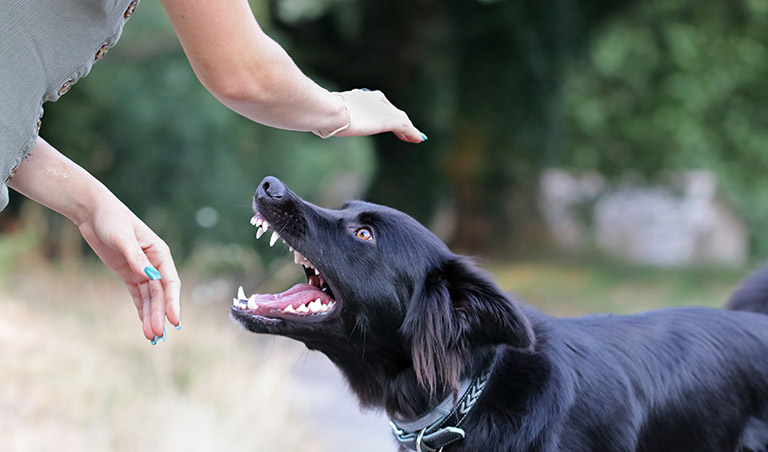Every year in the United States, an estimated 4.5 million people experience a dog bite, with approximately 800,000 requiring medical attention afterwards. This staggering statistic shows the importance of understanding dog behavior and taking proactive steps to prevent such incidents.
In this blog, we explain the reasons why dogs bite, how to identify warning signs, the significance of responsible pet ownership, essential dos and don’ts to avoid dog bites and what actions to take if you or your dog are involved in a biting incident.
Understanding Dog Behavior
Why Dogs Bite
Understanding dog behavior is essential for fostering positive interactions between humans and their canine companions. Dogs may bite for various reasons, often as a response to something. It is a form of communication for dogs, though it is generally regarded as undesirable and problematic. When feeling threatened or scared, dogs may react defensively to protect themselves, their territory or items they deem valuable such as their offspring, food or toys.
Moreover, dogs may resort to biting if they’re unwell, seeking solitude due to sickness or injury and reacting aggressively if approached. Different forms of aggression, such as predatory, frustration or redirected, social-conflict related, sexual or disease-related, can also cause biting incidents.
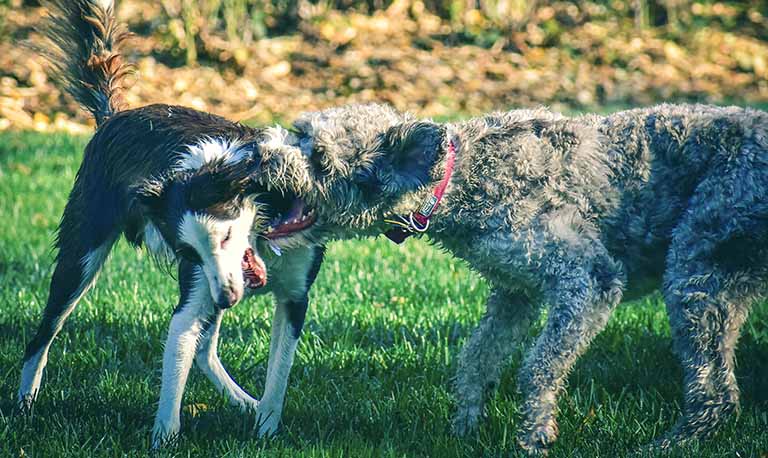
Warning Signs of Aggression and Stress in Dogs
Recognizing signs of aggression and stress in dogs is vital for preventing potential conflicts or injuries. These warning signs appear in various ways, including growling, snapping, stiffening or freezing, crouching and lowering of the body, pacing, shaking, hiding or attempting to escape. Additionally, signs may include widened eyes, avoidance of eye contact by turning the head away or squinting, shedding, panting, avoidance or displacement behavior, pinning or flattening of the ears tightly to the head, yawning or licking of the lips to indicate discomfort or anxiety.
Attentiveness to a dog’s body language provides important insight into understanding their emotional state. By interpreting these signals, pet owners can effectively communicate with their dogs, while other non-pet owners and pet parents can quickly assess whether it’s safe to be in the same area as the dog. This understanding fosters a safer environment for both humans and dogs alike.
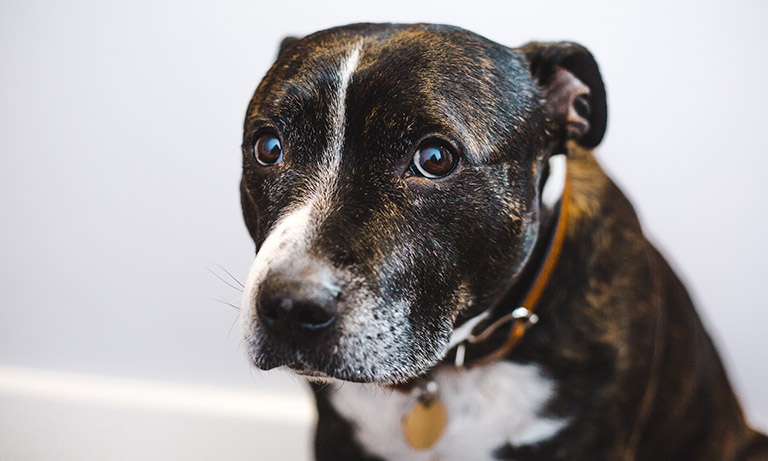
Preventing Dog Bites Through Responsible Pet Ownership
Proper Socialization
Responsible pet ownership goes beyond simply providing food and shelter for our furry friends; it encompasses a commitment to their physical and emotional well-being. One crucial aspect of responsible ownership is ensuring that dogs receive proper socialization and training from an early age. Socialization plays a pivotal role in helping dogs develop into well-rounded and confident individuals, equipping them with the skills to navigate various environments and interactions with ease. By exposing them to diverse experiences, people and other animals in a positive and controlled manner, you can significantly reduce the likelihood of behavioral issues arising later in life.
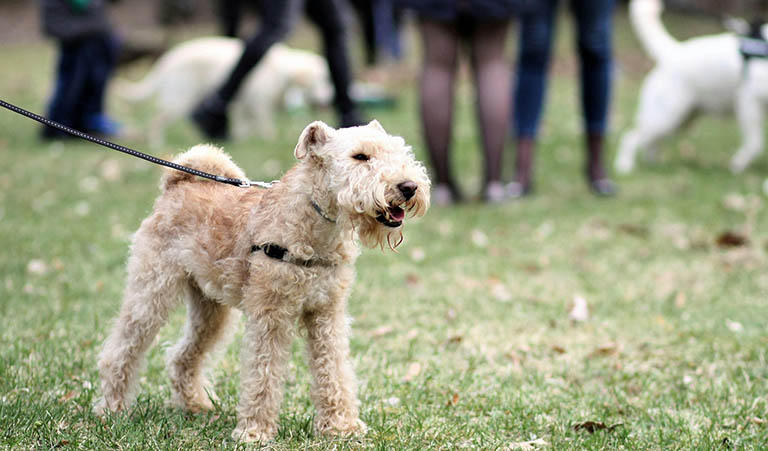
Training
Training forms another cornerstone of responsible pet ownership, serving to establish clear boundaries, expectations and communication channels between dogs and their owners. Through consistent and positive reinforcement techniques, you can effectively teach your canine companion essential commands, behaviors and manners. Training can provide dogs with coping mechanisms to deal with stress or frustration and to look to the owner for cues on how to handle different situations. All this aids in fostering a harmonious relationship built on mutual understanding and respect between dog and owner.
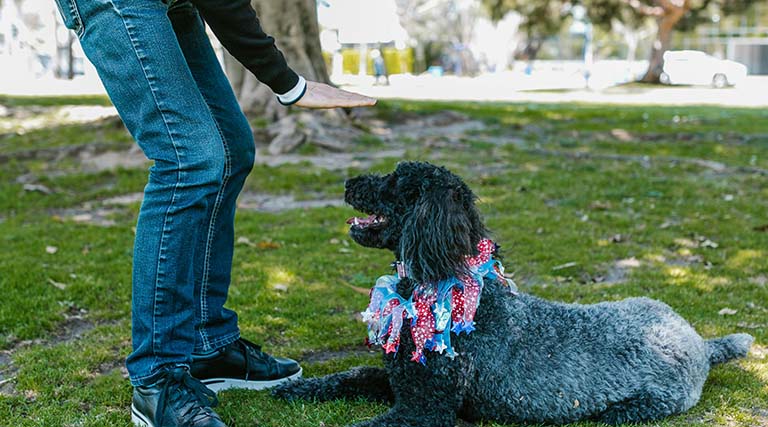
Overall Care
Taking care of your dog can play an important role in preventing dog bites as it contributes to their overall health and enhances their comfort and happiness. This includes scheduling regular veterinary check-ups to monitor their health and address any potential issues promptly. Also, providing a balanced and nutritious diet tailored to your canine’s individual needs, coupled with regular exercise to maintain their physical fitness is important for their well-being. Diligent grooming practices, such as brushing their coat, trimming their nails and cleaning their ears keep your dog feeling their best.
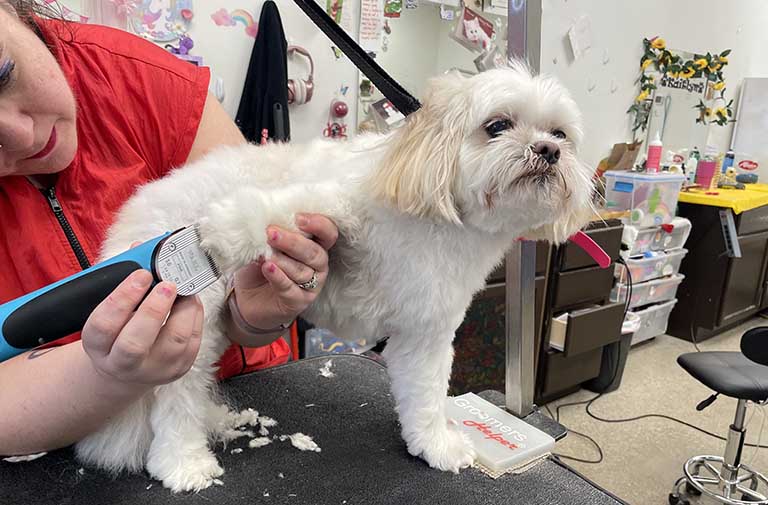
Enforcing Your Pet’s Boundaries
Each dog is a unique individual with its own set of boundaries and comfort levels. As a pet parent, it’s your responsibility to understand and respect these boundaries, safeguarding your furry companion from unwanted interactions and uncomfortable situations. Whether it’s a friend, family member, stranger, adult or child, it’s important to kindly but firmly remind them when they’re about to cross the line, explaining that such actions make your dog feel stressed or agitated. This is especially crucial if your dog reacts adversely to unknown people, other dogs and animals or certain behaviors. By honoring your canine’s boundaries, you demonstrate your commitment to them and prevent situations where they may feel threatened or uneasy.
How to Avoid Dog Bites in Public
What To Do
To minimize the risk of dog bites, it’s important to follow certain guidelines. Always be alert and attentive to your surroundings, watching for any signs of stress or aggression from dogs nearby. When approached by an unfamiliar dog, it’s important to remain calm and avoid sudden movements that may make the canine feel threatened. If that dog appears to be agitated or aggressive, stand still, avoid direct eye contact and slowly back away without turning your back to the dog. You may also use a firm and authoritative voice to communicate clearly to the canine to “sit” or “stay” as you remove yourself from the compromising situation.
Other dog bite prevention tips include using your voice to gently wake a sleeping dog from a safe distance to not startle it. It’s also a good idea to always seek permission from the dog’s owner before petting or approaching, respecting both the dog’s boundaries and the owner’s wishes.
What Not To Do
Never leave a child unsupervised with any animal, as even the most well-behaved pets can react unexpectedly. Avoid teasing dogs or engaging in any behavior that may irritate them. Steer clear of approaching unfamiliar dogs, particularly if they’re accompanied by puppies, as this could trigger the canine’s protective instincts. Never chase an unknown dog, as this can provoke fear or aggression. Avoid getting in between a dog and their owner, as this may cause the dog to feel threatened and protective. Respect a dog’s territory and personal space to prevent feelings of confinement and aggression. It is not a good idea to run from a dog, as it may trigger a chase response. Finally, refrain from interacting with a dog while they are eating, sleeping or meeting another dog.
What to Do if You Have Been Bitten By a Dog
Clean the Wound
Immediate action is needed if you have been bitten by a dog. First and foremost, clean the wound thoroughly with soap and water to reduce the risk of infection. Apply an antiseptic cream or ointment to the area and cover it with a sterile bandage or dressing. If the bite is severe or bleeding heavily, seek medical attention promptly. Depending on the severity of the injury, you may require stitches, antibiotics or a tetanus shot.
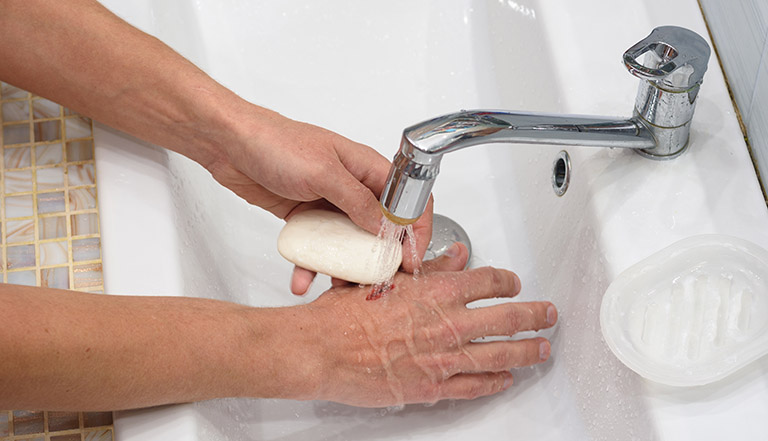
Report the Incident
It’s important to identify the dog and its owner, if possible, to determine its vaccination status and assess the risk of rabies transmission. In addition, gather as much information as you can about the circumstances surrounding the bite. This includes noting the location, time and any relevant details about the dog’s behavior leading up to the incident. Providing this information to local animal control authorities or law enforcement ensures that they can conduct a thorough investigation and take appropriate action to prevent further incidents.
What To Do If Your Dog Bites Someone
If your dog bites someone, it’s crucial to take immediate action to address the situation and protect the safety of everyone involved. First, restrain your dog and separate them from the scene of the bite to prevent any further harm. Try to confine your dog in a safe place while you assess the situation.
Next, check on the bite victim’s condition and encourage them to seek professional medical advice to evaluate the wound and risk of infections. If necessary, call 911 for assistance from paramedics. Provide the bite victim with your name, contact information and your dog’s rabies vaccination details. It’s also important to obey local rules and laws regarding reporting dog bites to the appropriate authorities. Lastly, consider seeking guidance from your veterinarian or a local dog trainer for advice on preventing similar incidents in the future by addressing your dog’s behavior.
Reducing the Number of Biting Incidents
Promoting safe interactions between humans and dogs requires a combination of understanding, proactive measures and responsible pet ownership. By recognizing the warning signs of aggression and stress in dogs, practicing proper socialization and training, ensuring a canine’s overall care, respecting a dog’s boundaries and acting properly towards a dog, pet owners and non pet owners can significantly reduce the risk of dog bites.
Additionally, knowing how to respond in the event of a dog bite, including seeking medical attention, reporting the incident and addressing any underlying behavioral issues, is essential for the safety and well-being of both the victim and the dog. Ultimately, by prioritizing education, awareness and proper actions, we can greatly reduce the number of biting incidents.


